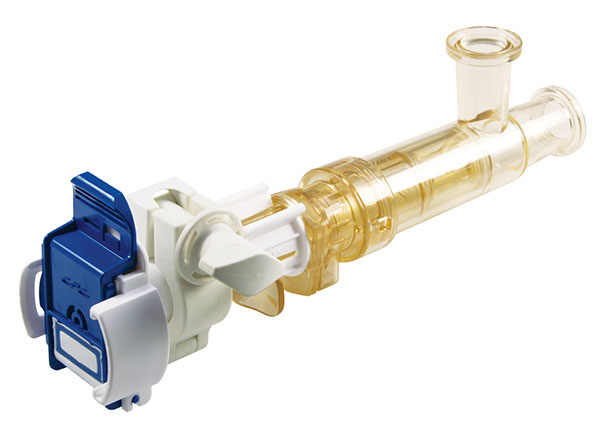| Features | Benefits | ||
| AseptiQuik design | Innovative three-step connection process reduces risk of operator error | ||
| Genderless Design | Eases integration of single-use systems with universal mating between AseptiQuik G Connectors | ||
| Robust Construction | Repeatable and reliable performance with no additional hardware required | ||
| Patented Steam Valve Design | Allows sterile connection and disconnection to stainless equipment and permits a high media flow rate. | ||
| Sanitary Interface Between the Two Connectors | More secure connection than tubing with cable ties | ||
| CPC Click |
Audible confirmation of assembly steps |
||
| Market Availability | Open access through multiple supply chain partners | ||
Operating Conditions (Fluid Transfer)
| Temperature: | 39°F to 104°F (4°C to 40°C) |
|---|---|
| Pressure: | Up to 35 psi, 2.4 bar (Steam-Thru II) |
| Temperature: | 39°F to 104°F (4°C to 40°C) |
|---|---|
| Pressure: | Vacuum to 20 psi, 1.4 bar |
Sterilization
| Gamma: | Up to 50 kGy irradiation |
|---|---|
| Autoclave: | Up to 265°F (129°C) for a total of 60 minutes |
| Steam-Thru II: | Up to 275°F/135°C (up to ~31psig) for 60 minutes |
|---|---|
| Note: Steam pressures are estimated based upon information in Steam Tables found in literature | |
Termination Sizes
| Sizes: | ¾” and 1 ½” sanitary |
|---|
Materials
| Main Components: | AseptiQuik – Polycarbonate (white), USP Class VI |
|---|---|
| Steam-Thru II – Polysulfone (amber tint), USP Class VI | |
| Seals: | Silicone (clear), platinum-cured, USP Class VI |
| Pull Tabs: | Polycarbonate (blue, standard version), USP Class VI |
| Polycarbonate (white, HT version), USP Class VI | |
| Caps: | Polypropylene (clear), USP Class VI |
| Membrane: | Polyethylene (standard version), USP Class VI |
| Hydrophobic polyethersulfone (HT versions), USP Class VI | |
| Clamp: | Nylon 66 (white), USP Class VI |
| Removable Sleeve: | Polycarbonate |
Cv Value
| AQS STCII CV Value 1-2 | |
| AQG STCII CV Value 3-9 | |
| AQC STCII CV Value 3-9 | |
| Cv values are based on gpm and psi, and Ipm and bar (shown in parentheses). |

